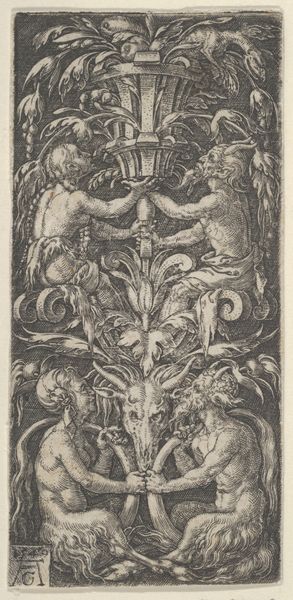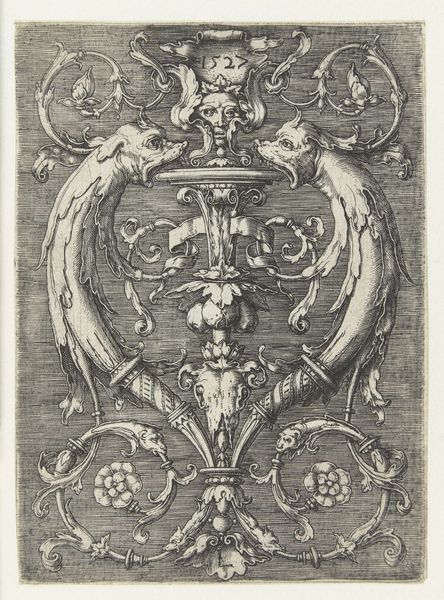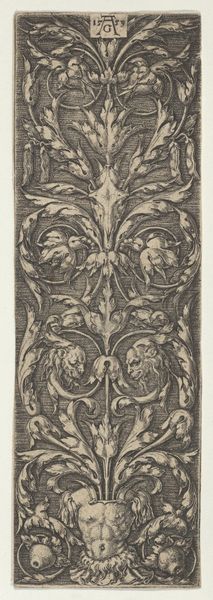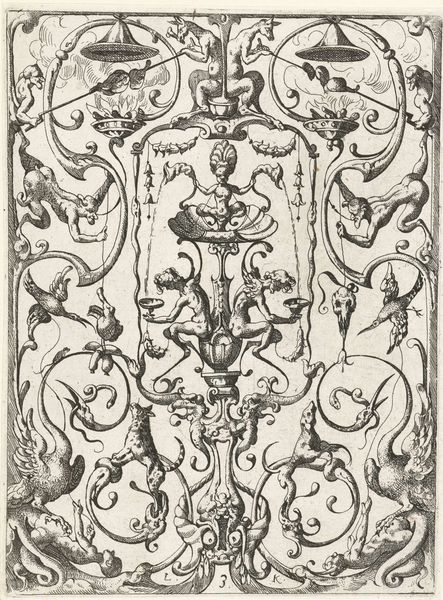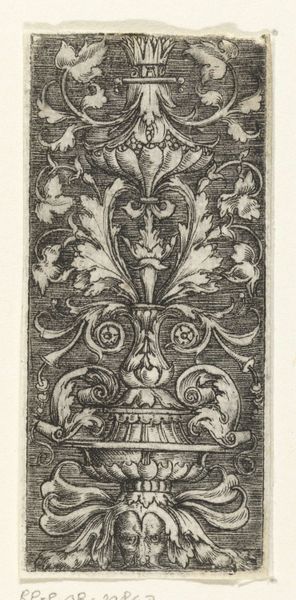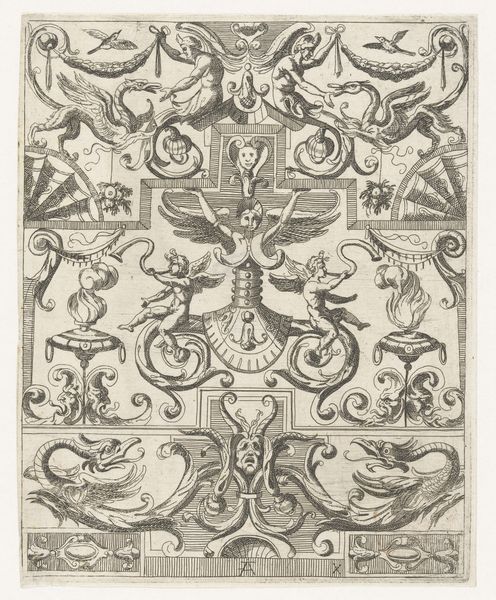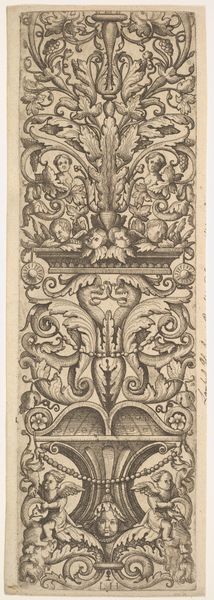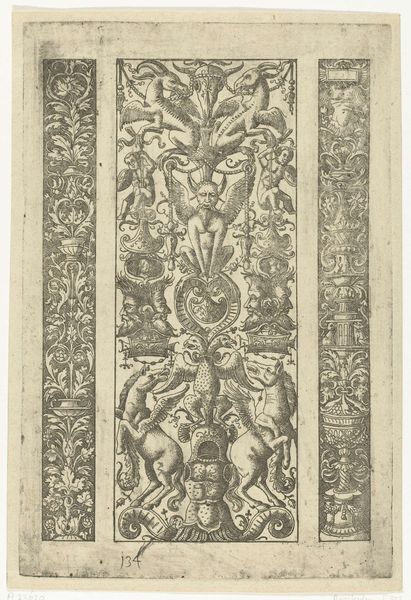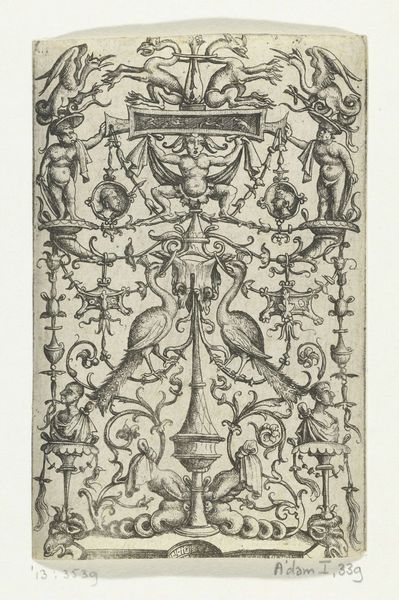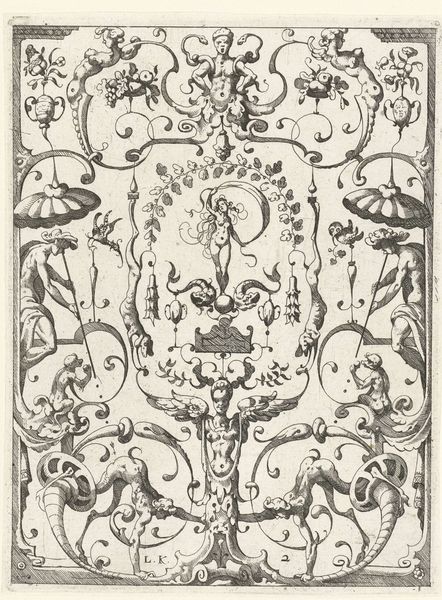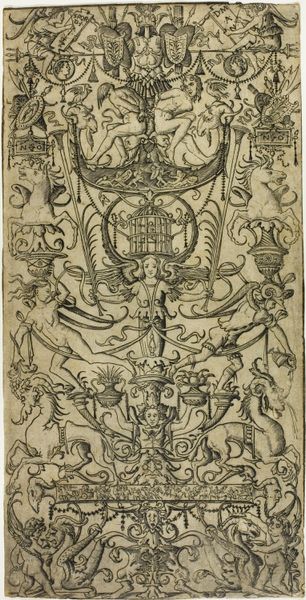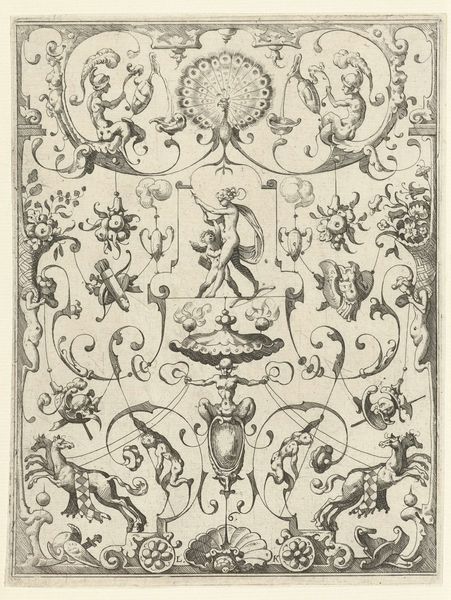
drawing, print, engraving
#
drawing
#
allegory
#
pen drawing
# print
#
pen sketch
#
landscape
#
mannerism
#
figuration
#
line
#
history-painting
#
engraving
#
erotic-art
Dimensions: Sheet: 3 7/16 x 1 5/8 in. (8.8 x 4.2 cm)
Copyright: Public Domain
Curator: Right now, we are looking at "Ornament with Two Couples of Satyrs," a print made in 1549 by Heinrich Aldegrever, currently held in the collection of the Metropolitan Museum. What are your first impressions? Editor: Well, it's weirdly formal and wild at the same time. It feels like stumbling upon a bizarre garden party thrown by woodland creatures who are way too into symmetry. All those hairy legs! Curator: The figures certainly invite consideration. Aldegrever, a German artist active during the Renaissance, produced this engraving, a form often used for disseminating ideas. The Mannerist style, visible here in the elongated forms and ornamental density, reflects the complex intellectual climate of the era. These satyrs, or hybrid creatures, occupy a complex place in the imagery of the time, harking back to classical mythology but often co-opted to talk about wild nature or the temptations of the flesh. Editor: Temptations for sure. But the careful composition is also intriguing. It's as if the artist wants to bring a sense of order and perhaps moral control over raw and ungovernable impulses. The use of very precise, tightly rendered lines to illustrate a supposedly licentious, raucous moment of pure id feels deliciously conflicted, right? Curator: Indeed, engravings such as these had a broad social function, not unlike printed books. Disseminated to a wide public, this particular work reminds viewers about what they believed at the time: the balance between the wild and the social self. Furthermore, prints such as these might have served a pattern for artisans. The "ornament" in the title also indicates how the image could have been put to use to inspire work in other mediums, whether metal, painting or textiles. Editor: Makes me think about all the images we encounter every day—all the signals we get, pulling us in different directions. It's interesting to imagine how an image like this worked back then, maybe stirring up similar feelings of attraction, resistance, or ambivalence in viewers grappling with what was licit and illicit, or how their private feelings should affect public personas. Curator: Ultimately, an image like Aldegrever's challenges us to confront our own ambivalence and recognize the social pressures that inevitably shape and regulate desire. Editor: I love how the picture has this feeling of wanting to burst its neat container. The ornament feels so alive, even constrained on a page!
Comments
No comments
Be the first to comment and join the conversation on the ultimate creative platform.
